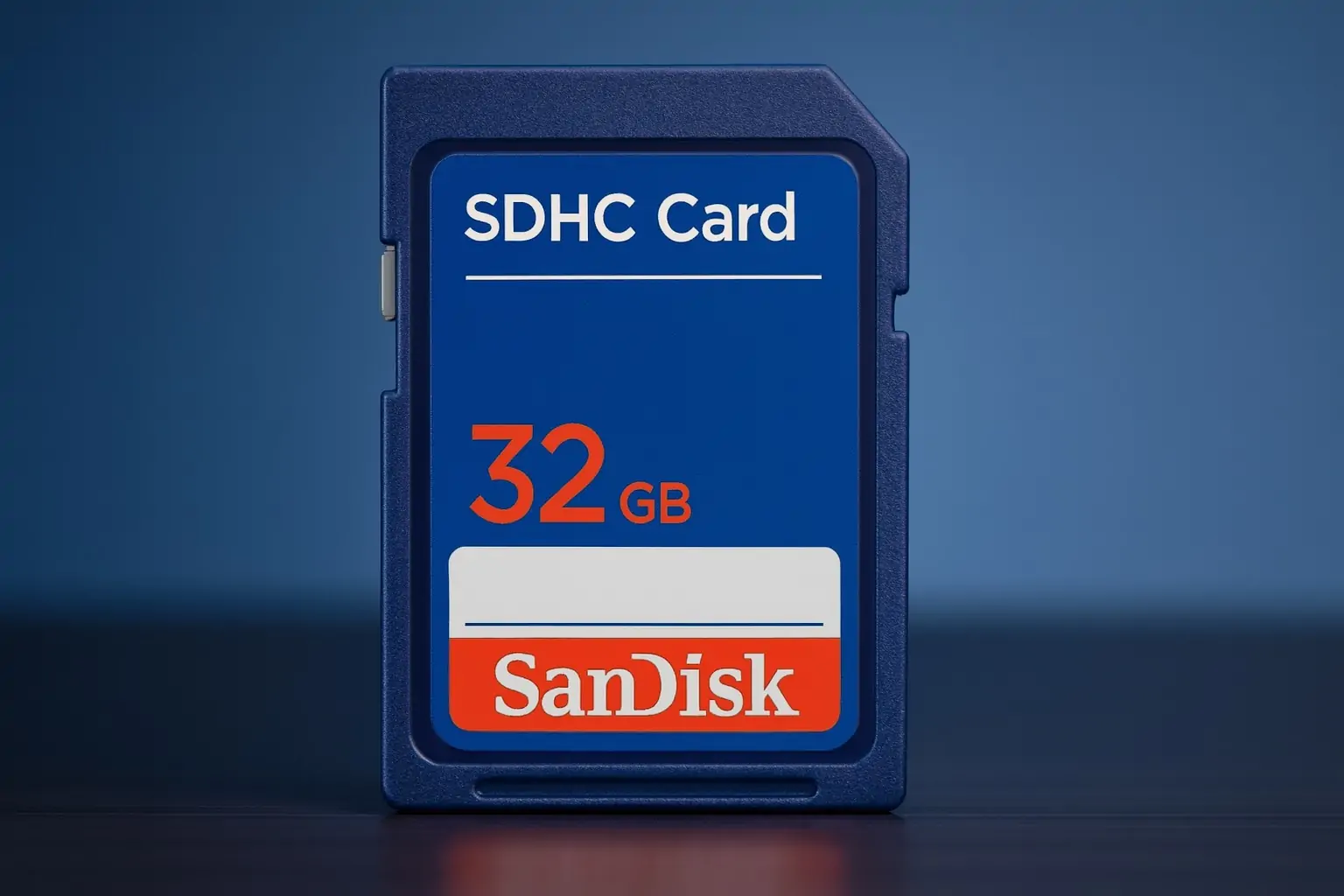- SanDisk (NASDAQ: SNDK) fell around 10% today after a huge year‑to‑date rally, but remains up roughly 8x from its 52‑week low. [1]
- Bank of America raised its price target to $300 (from $270) and reiterated a Buy, calling SanDisk an “AI winner” and seeing NAND undersupply through at least 2026. [2]
- Multiple Wall Street firms have aggressively lifted their targets in November, and data providers now show consensus ratings ranging from “Moderate Buy” to “Strong Buy.” [3]
- On the product side, SanDisk today launched the SANDISK® Extreme Fit™ USB‑C drive, billed as the world’s smallest 1TB USB‑C flash drive with read speeds up to 400MB/s. [4]
- The company is also rolling out firmware updates for high‑capacity portable SSDs and has won a trade‑dress case in India, underscoring its focus on reliability and brand protection. [5]
SanDisk stock: sharp pullback after a spectacular run
SanDisk shares are having a whiplash‑inducing November.
By late morning U.S. time, SNDK was trading around $220–221, down just over 10% on the day, after opening above $250 and closing yesterday at $245.96. The intraday range has stretched from roughly $222 to $255. [6]
Even after today’s drop, the move since spring is eye‑popping. SanDisk’s 52‑week low of about $27.9 on April 7, 2025, compares with a recent high near $284.8 on November 12, leaving the stock still roughly 780% above its low. [7]
Fundamentally, SanDisk now sports:
- Market cap around $32–36 billion
- Trailing‑twelve‑month revenue near $7.3–7.8 billion, but still loss‑making as the flash cycle recovers
- No dividend and a forward P/E in the mid‑teens, reflecting expectations of a sharp earnings rebound over the next few years. [8]
The volatility isn’t new. Last week, SanDisk dropped almost 14% in a single session as part of a broader sell‑off in memory names after Japanese partner Kioxia reported weaker sales and profits, dragging down Western Digital and Seagate as well. [9]
Against that choppy backdrop, today’s headline is that Wall Street, if anything, has become more bullish.
BofA’s Street‑high $300 target caps a month of upgrades
The biggest news for SNDK today is Bank of America’s fresh Street‑high $300 price target.
In a note following an investor meeting with CEO David Goeckeler and CFO Luis Visoso in San Jose, BofA reiterated its Buy rating and lifted its target from $270 to $300, an 11% bump and well above where the stock trades today. [10]
According to BofA and other research summarized by multiple outlets, the bullish case leans on several themes: [11]
- NAND market undersupply through at least the end of 2026
- Explosive demand from AI and cloud data centers, where SanDisk’s enterprise SSDs (eSSDs) are ramping
- Transition to its next‑generation BiCS8 node, expected to improve cost per bit and margins
- Tighter supply discipline – management signaled no plans to add capacity aggressively despite strong demand
- Longer‑term customer contracts, with hyperscale clients locking in volumes amid tight supply
- A preference to maintain a net cash position and emphasize share buybacks for capital returns
BofA isn’t alone. A GuruFocus roundup of recent analyst moves shows a flurry of price‑target hikes in November, including: [12]
- Barclays: $39 → $220, Equal‑Weight
- Morgan Stanley: $230 → $263, Overweight
- Susquehanna: $65 → $250, Positive
- Wedbush: $220 → $260, Outperform
- Benchmark: $125 → $260, Buy
Across the Street, the sentiment has shifted from cautious curiosity to outright enthusiasm about SanDisk as a leveraged play on AI‑driven storage demand.
What consensus looks like today
Different data providers tell slightly different stories, but they all skew positive:
- MarketBeat reports an average rating of “Moderate Buy” from 21 covering firms: 1 Sell, 6 Hold, 11 Buy and 3 Strong Buy, with an average 12‑month target around $183 (a figure likely lagging the latest wave of upgrades). [13]
- GuruFocus pegs the average target closer to $254, with a high estimate of $314 and a consensus recommendation equivalent to “Outperform.” [14]
- StockAnalysis lists the consensus rating as “Strong Buy” and a target around $217.5, just below today’s price, reflecting how quickly the shares have run ahead of many older models. [15]
In short: analyst models are scrambling to catch up with SanDisk’s stock price and with a flash‑memory cycle that has tightened far faster than most expected at the start of 2025.
NAND price hikes show SanDisk’s new pricing power
Behind the analyst optimism is something very tangible: SanDisk is raising prices, and customers are paying up.
Industry site OSCOO, citing public reports, notes that SanDisk increased NAND flash contract prices by as much as 50% for November, its third hike this year after roughly 10% increases in April and September. [16]
That’s a dramatic move in what’s often treated as a commoditized market. The drivers:
- Surging demand from AI data centers, which are hungry for ultra‑large SSDs (think 122TB and 245TB nearline drives) to feed model training and inference workloads
- A shift from traditional HDDs to high‑capacity SSDs for both performance and energy‑efficiency reasons
- Rising storage requirements in high‑end laptops, gaming rigs, industrial systems and connected devices. [17]
According to GuruFocus, SanDisk is now one of the world’s five largest NAND suppliers, vertically integrated via joint‑venture fabs in Japan (with Kioxia) and repackaging most of its output into SSDs and removable products. The company spent nine years inside Western Digital before being spun back out as an independent entity in 2025. [18]
That combination of scale, manufacturing control and a still‑tight industry supply picture is what gives SanDisk the confidence—and ability—to push through such aggressive pricing.
New 1TB SANDISK® Extreme Fit™ USB‑C drive launches today
Today’s news isn’t all about Wall Street. There’s also a headline‑grabbing consumer product launch.
In a press announcement from Milpitas, California, SanDisk introduced the SANDISK® Extreme Fit™ USB‑C Flash Drive, which it calls the world’s smallest 1TB USB‑C flash drive. [19]
Key points from the launch:
- Ultra‑compact “leave‑in” design – meant to stay plugged into slim USB‑C laptops and tablets without sticking out
- Capacity up to 1TB, aimed at users who are running out of internal storage
- Read speeds up to 400 MB/s on 128GB–1TB models (and up to 300 MB/s on 64GB), so moving large media libraries or project files doesn’t feel painfully slow
- Integration with the SanDisk Memory Zone app on Windows and macOS for simple backup and restore flows
- Compatibility across laptops, tablets and other USB‑C devices, targeting professionals, students and everyday users who live a mobile lifestyle. [20]
As Christina Garza, SanDisk’s Director of Global Brand Management, put it in the release, the idea is to give people “fast, high‑capacity storage—ready when they need it, without the hassle of plugging and unplugging.” [21]
For SanDisk, the Extreme Fit line also strengthens the company’s positioning in back‑to‑school, hybrid work and creator‑focused segments just as holiday shopping and Black Friday deals ramp up.
Firmware updates and a legal win underscore reliability and brand focus
Beyond stock and product headlines, SanDisk has made a couple of quieter but important moves today.
Portable SSD firmware update
On the company’s official forums, SanDisk staff announced a new firmware update for the 4TB and 8TB SANDISK Extreme Portable SSD (model SDSSDE61), available through the Memory Zone software on Windows and macOS. [22]
Details of the patch aren’t spelled out in the forum post, but firmware updates for these drives typically aim to:
- Improve stability under heavy workloads
- Address edge‑case reliability bugs
- Enhance compatibility with newer OS versions and chipsets
Given how many creators and professionals now rely on high‑capacity portable SSDs as their everyday scratch disks, ongoing firmware support is essential to maintaining trust in the brand.
Delhi High Court trade‑dress injunction
Legally, SanDisk scored a notable victory in India. The Delhi High Court has granted a permanent injunction in favor of SanDisk LLC in a trade‑dress dispute, finding that local firm Welborn Industries’ XANIVO packaging unlawfully mimicked SanDisk’s look and feel. [23]
While it won’t move the stock on its own, the case matters because:
- India is a strategic growth market for storage and smartphones
- Trade‑dress rulings help deter copycat packaging, which can confuse customers and dilute brand equity
- It reinforces SanDisk’s willingness to actively defend its intellectual property in key jurisdictions
Taken together, the firmware update and legal win signal a company that’s not just chasing AI headlines, but tending to the long‑term health of its product ecosystem and brand.
The bigger picture: AI tailwinds vs. cyclicality and volatility
For anyone watching SNDK—whether as an investor, customer or industry observer—the picture on November 20, 2025 is nuanced.
Reasons the bulls are excited
- AI & data‑center demand is structural, not just cyclical. Every new wave of generative AI and large‑language‑model deployments requires massive, fast storage, and SanDisk is positioning itself as a key supplier of those bits. [24]
- Pricing power is back. Three rounds of price hikes in 2025, including up to 50% for November contracts, suggest that years of oversupply are giving way to a tighter, more rational market. [25]
- Technology roadmap looks competitive. The shift to BiCS8 and continued joint‑venture investment with Kioxia indicate a path to higher density, better performance and lower cost per bit—critical ingredients for long‑term margin expansion. [26]
- Wall Street is leaning in. From BofA’s $300 target to a string of upgrades from Barclays, Morgan Stanley and others, SanDisk has rapidly moved onto the list of favorite AI‑adjacent plays. [27]
Risks and what to watch next
- Flash is still cyclical. Today’s undersupply and price spikes can invite future capacity additions, potentially setting up another down‑cycle later in the decade.
- Valuation embeds high expectations. After a ~700–800% run off the lows, the market is already pricing in a lot of good news. Any stumble—on pricing, demand, or execution—could be punished. [28]
- Macro and rate jitters can hit high‑beta tech. Recent market sell‑offs driven by worries over Fed policy have shown how quickly sentiment can swing against AI‑linked names, including SanDisk. [29]
- Competition remains fierce. Giants like Samsung, Micron and SK hynix are not standing still in NAND or data‑center SSDs, and Kioxia’s own financial wobbliness adds another layer of complexity to the supply picture. [30]
For now, though, November 20, 2025 will go down as the day Wall Street gave SanDisk a Street‑high $300 vote of confidence—and the company answered with a tiny 1TB USB‑C drive that’s designed to live permanently in your laptop.
As always, this article is for information, not investment advice. Anyone considering SNDK should look closely at their own risk tolerance, time horizon, and the inherently cyclical nature of the memory business.
References
1. stockanalysis.com, 2. www.gurufocus.com, 3. www.marketbeat.com, 4. mid-east.info, 5. forums.sandisk.com, 6. stockanalysis.com, 7. www.indmoney.com, 8. stockanalysis.com, 9. www.reuters.com, 10. www.gurufocus.com, 11. www.investing.com, 12. www.gurufocus.com, 13. www.marketbeat.com, 14. www.gurufocus.com, 15. stockanalysis.com, 16. www.oscoo.com, 17. www.oscoo.com, 18. www.gurufocus.com, 19. mid-east.info, 20. mid-east.info, 21. mid-east.info, 22. forums.sandisk.com, 23. www.bwlegalworld.com, 24. www.oscoo.com, 25. www.oscoo.com, 26. www.gurufocus.com, 27. www.gurufocus.com, 28. stockanalysis.com, 29. www.reuters.com, 30. www.oscoo.com







